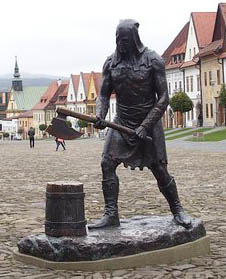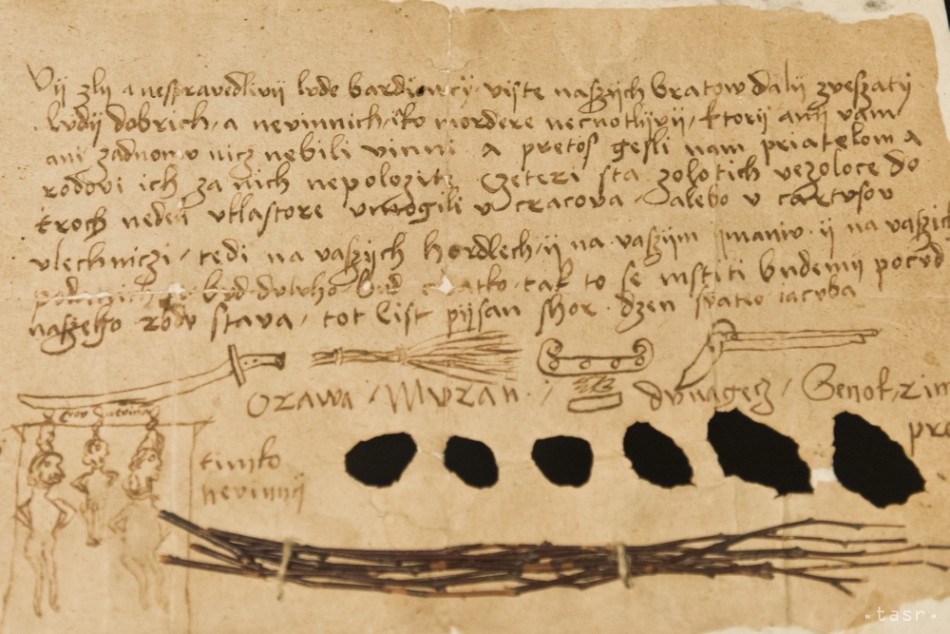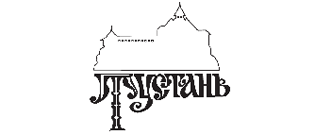The end of the 15th century is a turbulent time in the history and Polish-Czech-Hungarian relations. The year 1471 turned out to be particularly fateful and caused a long war. Maciej Korwin, anointed by Pope Sixtus IV as King of Bohemia, did not manage to communicate with the Jagiellons and the Habsburgs, which caused an armed conflict between the two countries. In 1474, in retaliation for the damage done in Upper Hungary by Paweł Jasieński, Maciej Korwin led an expedition to the Polish Ruthenia. The Polish-Hungarian war did not end until 1479, and it was followed by well-trained and armed gangs of cut-throats.
The people affected by the war, who could no longer stand the oppression, terrible living conditions and their own humiliation, decided to take matters into their own hands. After 1485, numerous, well-organised gangs, usually consisting of Vlachs, appear on the Polish-Hungarian border. These are groups operating locally, rarely venturing outside the known region, robbing everyone without exception, and what is interesting, having the support of the rural people.
However, the real nightmare of the borderland, among others, became the gang of Fedor Hlavaty (Głowaty). According to sources, the captain of the robber band was a Ruthenian. He was born near Snina in the village of Ruska Volova. He was a leader of a 50-person team consisting of Poles, Russians, Slovaks and Vlachs. The company included two of his brothers Danko and Wąska, the sons of Lanovit of Hostowice, Sztec of Poczolina, Vasko of Brenz, Ivan of Kolbasowo, Roman and Klima of Ulicz, Hric (Michał) of Stakcin, Roman of Wolosziniec and Tader of Snina. They were organised according to the military model (many of them took part in the recent war) and enjoyed considerable support from the highlanders. The first mention of the band is recorded on 30 March 1492. That year, in the field of Stefan Rozgań, in the present district of Svidnik, the band caused damage of 400 zlotys. Since then, it has become the terror of wealthy merchants from Slovakia and Poland, and they primarily robbed noble and church property as well as goods of the urban patriciate. The places most hated and often invaded by Hlavatý were Oświęcim, Żywiec, Nowy Sącz, Orawa, Murań, Dunajec, Rymanów, Żmigród, Biecz and Sanok. Moreover, the towns that have received the so-called the right of sword (the right to judge, which was punishable by death and the right to execute the death sentence), were cruelly treated for revenge by robbers’ bands.

Bardejov obtained the right of sword in 1365. Contemporary sculpture at the Market Square in Bardejów.
In four years, from 1492 to 1495, they have not been merciful for such towns as Humenne, Snina, Medzilaborce, Svidnik, Stropkovo and distant Dunakeszt (now, a city in Hungary in the Pest County). They operated in a very wide area from Orawa through Spisz, Zemplin, Abovo to Przemyśl. When the situation required it, for some time they moved to the Kingdom of Poland or in Transcarpathia, where they were waiting until difficult gone, to attack again with redoubled strength.
In 1493, during an invasion of manor property, the pandurs (a private army composed of Hungarian magnate servants) captured Hlavati’s two companions. Vasko and Timko were judged and then killed in the royal town of Bardejov. For their death, members of the robber’ band swore the city to make severe revenge. And so, the history of warlord Hlavata went down to the history thanks to so-called Hussite burnt letter, which he addressed to Bardejov burghers on 23 July 1493.
„(…) He realised that now there is no going back and it is best to tell the truth, even the worst, but the truth. – Sir, they captured Vasko and Timko two weeks ago, and they killed them, though. There was silence. The robbers looked at each other and shook their heads in disbelief. – It cannot be truth, were Vasko and Timko executed!? – a voice came from the end of the room. – They were innocent, they were only spies! – We ought to avenge it, on behalf of our comrades, and burn the cursed town! – another warlord added. (…) – We’ll write a letter to them, they have three weeks to deliver money. They will leave them at the priests in Lechnica, at Spisz at the monastery near Cracow! – And if they don’t agree! – We will do as we’ve said! – Good idea, but who will write the letter! – That’s why I called Szterc of Poczolin! (…) – You fought with people from Uher! – Oh yes! – And you were thought how to write during the war! – Oh yes, they thought me! – So you haven’t been an warrior, though a quill-driver! – Fedor retorted.(…) – All right, let’s finish the chit-chat! Let’s write the letter! I saw a quill and a paper here, on the floor. Put them on the table, and you, sit down and get ready for writing! When he got his hands on the quill, he looked at it carefully and then, he gave it to Szterc. He pulled a knife from his belt, gently cut his left forearm and put a bit bloody hand on the table. – Immerse the quill and write what I’m saying! – the captain has made an order.(…)
For hanging the friends, in the letter he demanded 400 florins in gold. He ordered the ransom to be lodged with carthusians in Lechnica at Spisz (Red Monastery), or in the Mogilski monastery near Cracow. He threatened that if the money was not delivered to the agreed place within three weeks, the city would be burned down. Different drawings were placed under the text. The sabre, fire and gun were to emphasize the severity of revenge. The same sabre, gun and a whisk were to symbolise injuries and loss of life, while fire was an ominous element devastating the households. Furthermore, the cities such as: Orawa, Murania, Dunagesz, Sanok, Rymanów and Przemyśl were listed. And it was there, where they made severe looting. Under the names, there were six holes and a broom tied in two points. In the left corner there is a picture of the beheaded person, and the inscription above: Vasko is innocent, and next to it, there is a gallows with three hange persons and the inscription: innocent Crova (above the gallows) and on the side: innocent Timko.
W liście za powieszenie druhów zażądał 400 florenów w złocie. Okup polecił złożyć u kartuzów w Lechnicy na Spiszu (Czerwony Klasztor), bądź w klasztorze mogilskim pod Krakowem. Zagroził, iż w przypadku niedostarczenia pieniędzy w umówione miejsce, w ciągu trzech tygodni, miasto zostanie spalone. Pod tekstem umieszczono różne rysunki. Szabla, ogień i pistolet miały podkreślać srogość zemsty. Ta sama szabla, pistolet i dodatkowo trzepaczka miały symbolizować obrażenia ciała i utratę życia, zaś ogień, to złowieszczy żywioł trawiący gospodarstwa. Ponadto wymieniono miejscowości takie jak: Orawa, Murania, Dunagesz, Sanok, Rymanów i Przemyśl, w których dokonywali srogich grabieży. Pod nazwami sześć otworów i wiązana w dwóch miejscach miotła. W lewym rogu obraz ściętej osoby, a nad nią napis: Vasko jest niewinny, zaś koło niej szubienica z trzema wisielcami oraz napis: niewinny Crova (nad szubienicą) i z boku: niewinny Timko.
The authorities of Bardejov were not too concerned about Hlavati’s threats. They ignored his demands and did not pay the ransom. The robber gave as good as he got and kept his word. He robbed the burghers and imposed a contribution on them, and then burned the city to the ground.
Hlavate’s gang was becoming a growing threat to the local community. The owners of the estates in Bardejov, Šariš, Zborov and the Stropokov castle in Šariš district, together with other feudal lords, began to organise armed actions aimed at stopping the robbery. Others also pulled together against the known warlord. It was commonly known that the nobility of Košice hired 400 soldiers to fight the Hlavati gang. And this was the only reason why, under the pressure of the army, the gang of robbers was pushed northwards, towards the Polish border, and was finally split up. The captured Fedor Hlavati, judged and hanged in 1495 in Trebiśov.
This is more or less what Hlavati’s short biography looked like, although there is another biography based on legends and folk messages. According to them, the captain of the robbers knew Dobosz, the most known warlord of the Bieszczady land. And it was Oleksy who, learning about his capture, decided to free him from Szygec cellars. For fear of Dobosz’s attack, however, the city released Hlavati from the cellars and prepared a trick. “Then go free wherever you like, but beware! We were told that Dobosz, having found that in Szygeta you are staying helpless in the cellar, was coming to the city to kill you secretly because you were more known than him. “Hlavaty was stopped at the city bars and he lurked for Oleksy with a gun. He did not know, however, that bullets did not hurt Dobosz, and when he shot, the bullet flew just above his head. Seeing this, the warlord withdrew from the city, and Hlavati was again captured. He was executed in Szyger, although he would probably have saved his life if the pardon letter from the Viennese Emperor had been delivered in time. “As the emperor found out, he got angry and ordered that every year, on the day of Hłovati’s death, the city of Szyget brought him a helmet full of gold pieces, which the robber wore on his head, and his head was large.”
The local people were also talking about his name and it was stated that Hlavatý, or rather hołowa, or rather hlava is a head. And if so, he had to have a big head. He also appears in folk communications under the name Hołowacz, who ventured all the way to Czarnohora and devastated nearby villages with a small army unit.
There is so much legend, because he could not really be a companion of Dobosz, because he was in the Carpathians in the first half of the 18th century (in 1738 he was the leader of a group of 30 people), and Hlovaty was executed in 1495.
Robber exhibits and a copy of letter that have been collected, may be seen in the Museum of Ukrainian Culture in Svidnik. This robber was commemorated and an honour was given to him on the wall of the Commune Office of Ruska Volova. Here, next to the emblem, there is a plaque in Slovak and Ukrainian, confirming the fact of his birth. Due to the unusual threatening letter, considered to be “the first Carpathian comic book”, many researchers were involved in Hlavate’s activities. However, we owe the full development of the episode to Alexander Husćava, the late Slovak historian. This incredible event was also used in the Hussite novel Brotherhood of the Czech writer Alojz Jiraska. Thus, the feat of Ruthenian Fedor Hlavatý, who prowled in the far north of the Hungarian Kingdom at the end of the 15th century, became a permanent feature of the history of the Carpathian robbery.

Copy of a letter to the patricians in Bardejov dated 23 July 1493, document is in the collections of the Museum of Ukrainian Culture in Svidnik.
Rafał Grosz – highlander from Koniaków, lover of highlander tradition and highlander’s life; mountain tourism leader, hiking promoter, originator and organiser of regional hill climbs.
Bibliography:
R. Roman, Zbójnictwo w Karpatach Wschodnich i Środkowych. O łemkowskich zbójach, Kurier Lwowski. Dodatek Literacko – Naukowy, R.III, nr 53/358
Domiv, Ruthenian Outlaw Feder Hlovatyj Hlavaty z Rusovej Volowej, www.holsy.sk
Jak to na łemkowie zbójowano…, lemkowyna. blogsport.com
W. Hantiuk, Legendy pro opryszkiw, zapisane w 1907 r. w Zelenycach nadwirniańskiego powiatu, od Iwana Ostaszuka, Ant. Onyszuk
S. Orłowski, O Bieszczadzkich zbójnikach, Katowice 1988
U. Janicka-Krzywda, Poczet harnasi karpackich, Warszawa-Kraków 1988

















